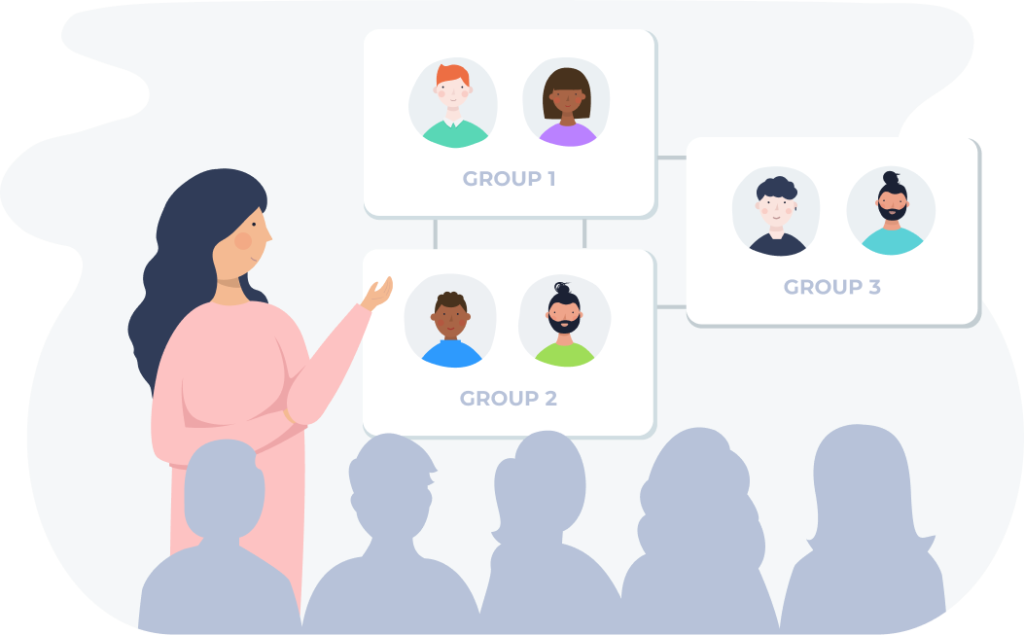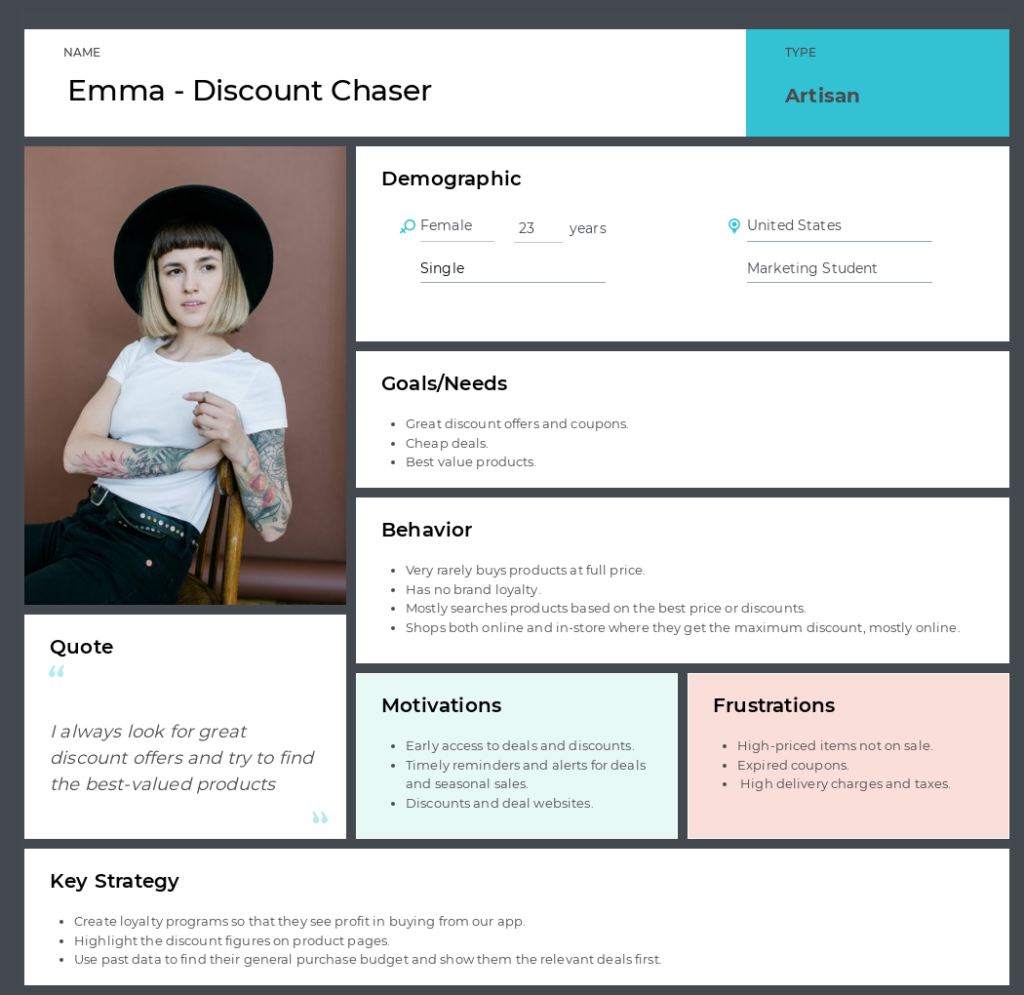Transforming browsing into buying is the alchemy at the heart of successful e-commerce. To do so, we need to venture deep into the psychological, technological, and creative nuances shaping customers’ online shopping behavior.
We'll decode the complex web of consumer decisions, revealing the hidden influences behind every click, view of your content, and preference, all to gain a deeper understanding of how to create online experiences that truly engage customers and increase your sales.
Ready?
Contents
What is online customer behavior?

Online customer behavior refers to the actions and patterns exhibited by consumers when they interact with e-commerce platforms and digital marketplaces and when they do mobile shopping. This behavior encompasses a wide range of activities and psychological processes, including how customers search for products, navigate through online stores, their decision-making process, and their purchasing habits.
Key aspects of online customer shopping behavior include:
- Browsing patterns: how customers navigate an online store, including the pages they visit, the products they view, and the time they spend on each page.
For instance, a customer might consistently start their online shopping journey on a sports apparel website by checking the 'New Arrivals' section, indicating a preference for the latest trends. Analyzing such patterns can help businesses prioritize which products to display prominently.
- Search behavior: the way customers use search functions on e-commerce sites, including the keywords they use and how they refine their searches.
A customer searching for "waterproof hiking boots" might refine their search to "women’s waterproof hiking boots size 7," suggesting a need for more specific, targeted product categories or filters.
- Decision-making process: how customers decide what to buy, influenced by factors like product descriptions, reviews, price comparisons, and brand reputation.
A customer might spend several minutes reading user reviews and comparing the specifications of different smartphones before making a purchase decision, highlighting the importance of detailed product information, product comparison functionality, and authentic reviews.
- Purchasing habits: they include the frequency of purchases, the types of products bought, and the average spending per purchase, etc.
A pattern where a customer regularly buys organic skincare products every two months could signal a subscription-based sales opportunity for the business.
- User engagement: this is how customers interact with the site's content, including clicks, video views, and social media interaction.
For example, a customer who frequently watches tutorial videos on a makeup retailer’s site might be more receptive to marketing emails that include video content, suggesting a strategy for more engaging communication.
- Cart behavior: this includes how often customers add items to their cart, how long items stay in the cart, and the cart abandonment rate.
A customer might add items to their cart but leave the site without purchasing. If they return several days later to complete the purchase, this might indicate the effectiveness of a cart abandonment email strategy.
- Feedback and reviews: how and where customers provide feedback or write reviews about their purchases.
A customer who consistently leaves detailed reviews about kitchen appliances might be a valuable source of user-generated content and could be engaged as a brand ambassador.
- Response to marketing efforts: how customers respond to marketing activities, like email campaigns, social media ads, and personalized recommendations.
A customer might ignore generic marketing emails but click through on personalized recommendations based on their browsing history, indicating the value of personalized marketing efforts.
Grasping e-commerce customer behavior is essential for businesses aiming to refine their e-commerce strategies, improve the user experience, boost sales, and foster customer loyalty. To closely examine these behavioral patterns, businesses may opt for customer journey mapping and persona creation, as both tools are great for visualizing data and digging into related insights. All for a more effective and satisfying shopping experience for customers.
Why is consumer behavior important for e-commerce marketing?

As we delve deeper into the intricacies of e-commerce marketing, a fundamental aspect emerges that is pivotal to the success of any online business: understanding consumer behavior.
This component is not just a piece of the puzzle; it's the lens through which we can view the entire picture of e-commerce dynamics. Let's explore why comprehending consumer behavior nuances is beneficial and essential for crafting effective e-commerce marketing strategies.
Here are several key reasons:
- Personalized marketing strategies
Example: Imagine a customer, John, who frequently browses outdoor camping gear online. If an e-commerce store specializing in outdoor equipment notices John's browsing habits, they can send him personalized marketing emails featuring camping gear, perhaps even timed around the start of the camping season. Thanks to this targeted approach, John one day makes a purchase.
- Product development and inventory management
Example: A beauty products e-commerce site notices a trend in customers searching for organic skincare products. By analyzing this behavior, the company can stock more of these products or develop its organic line, ensuring it meets the evolving preferences of its customers.
- Optimizing user experience
Example: Sarah, a frequent online shopper, often gets frustrated with complicated checkout processes. E-commerce sites that understand such pain points and do their best to simplify the checkout process enhance the user experience and reduce cart abandonment rates.
- Effective pricing strategies
Example: An online bookstore might observe that customers are more likely to purchase books that are part of a discount or loyalty program. Understanding this behavior can help the store implement dynamic pricing strategies or loyalty discounts to boost sales.
- Enhancing customer engagement and loyalty
Example: A sports equipment e-commerce store finds that its customers often engage with instructional videos and blogs about sports training. By creating more of this content, the store can increase customer engagement, positioning itself as a trusted source of both products and information, thereby enhancing customer loyalty.
- Predictive analysis for demand forecasting
Example: During the holiday season, an online toy retailer analyzes past consumer behavior and predicts a rise in demand for certain types of toys. They proactively stock up on these items, ensuring they meet customer demand without overstocking.
Customer behavior types

There can be lots of online customer shopping behavior types. It all depends on the basis you determine them on. Here are some common e-commerce customer behavior types (fun fact: each type can become your online shopping persona):
- Impulse buyer
It’s a person who makes spontaneous purchases without much pre-planning or research.
Example: While scrolling through social media, Emily sees an ad for a limited-time offer on a new pair of designer shoes. The ad's urgency and the product's allure prompt her to buy immediately without comparing prices or reading reviews.
- Discount chaser
It is a person who is always looking for the best deals, discounts, and offers.
Example: Emma regularly checks multiple e-commerce sites and subscribes to newsletters to stay informed about sales and discount codes. She waits for the annual Black Friday sale to make most of her purchases.

- Loyal customer
It’s a person who prefers to stick with familiar brands or stores and values trust over price.
Example: Sarah has been buying her skincare products from the same online store for years. She trusts their product quality and customer service and even recommends the store to her friends.
- Researcher
It’s a person who spends a lot of time comparing products, reading reviews, and seeking the best value before making a purchase.
Example: Before buying a new laptop, Mike spends weeks comparing different models, reading expert reviews, watching comparison videos, and checking customer feedback.
- Ethical shopper
It’s a person who prefers products and brands that align with their personal beliefs and values, like sustainability and ethical business practices.
Example: Lisa exclusively shops from e-commerce platforms that sell eco-friendly and sustainably sourced products. She is willing to pay a premium for environmentally responsible products.
- Indecisive customer
It’s a person who often fills their cart but hesitates to make the final purchase, needing additional push or reassurance.
Example: Alex frequently adds items to his cart but then abandons it, unsure about the necessity or value of the purchase. He often responds well to follow-up emails that offer additional information or limited-time discounts.
- Tech-savvy shopper
It’s a person who is comfortable with and influenced by digital innovations, social media, and mobile shopping.
Example: Emma uses her smartphone for shopping, responds positively to targeted ads on social media, and often shops through apps that provide a seamless and interactive shopping experience.
Factors that influence consumer behavior

Different factors influence consumer behavior, each playing a pivotal role in how customers make decisions and interact with e-commerce platforms. Here are some of the critical factors:
- Psychological factors
Motivation. Consider Anna, who needs a new smartphone. Her primary motivation, needing a reliable device for work, drives her choice more than brand loyalty or aesthetics.
Perception. Dave perceives organic products as healthier, influencing his decision to choose organic groceries over conventional ones consistently.
- Social factors
Family influence. Emily, a new mother, is influenced by her family's recommendations on baby products, often buying brands her family trusts.
Social media and peers. John's purchase of a high-end camera is heavily influenced by recommendations and reviews he sees on social media and photography forums.
- Cultural factors
Traditions and beliefs: Sarah buys certain foods and clothing that align with her cultural traditions and beliefs, influencing her shopping habits, especially during cultural festivals.
Subculture: Mike, a part of a fitness subculture, prefers buying from popular brands that are popular within his fitness community.
- Economic factors
Personal financial situation: Lisa, a recent graduate with a limited budget and time, tends to shop at e-commerce stores offering the best deals and discounts.
Market trends: During an economic downturn, Alex might become more price-sensitive, seeking more affordable alternatives for his usual purchases.
- Personal factors
Age and lifecycle stage: A teenager like Emma will have different shopping preferences and behaviors compared to someone in their 30s, like Dave.
Lifestyle: Anna's active lifestyle influences her to buy sportswear and fitness-related products frequently.
- Technological factors
Ease of use: If an e-commerce site is not user-friendly, customers like John may quickly lose interest and move to a competitor’s site.
Mobile accessibility: Emily, who shops primarily using her smartphone, prefers e-commerce platforms with seamless mobile web interfaces and apps.
How to use customers’ online shopping behavior for marketing?

Leveraging customers’ online shopping behavior for marketing is a strategic approach that can significantly enhance the effectiveness of marketing campaigns. Here are some ways to use this behavior:
- Personalized marketing. Personalization increases relevance, which can lead to higher engagement and conversion rates as it resonates more with the individual's interests.
Suppose a customer like Sarah frequently browses yoga mats and fitness wear. In that case, the e-commerce platform can send her personalized email campaigns featuring similar products or exclusive offers on yoga-related items.
- Retargeting campaigns. Retargeting reminds customers of what they’ve shown interest in, increasing the likelihood of converting abandoned carts into sales.
John added a pair of sneakers to his cart but didn't complete the purchase. The e-commerce store can retarget him with ads for those sneakers on social media or via email.
- Optimizing user experience. Enhancing user experience at critical stages of the shopping journey can significantly reduce drop-offs and increase conversion rates.
Analytics show that many customers, like Emily, abandon their carts at the shipping options stage. The e-commerce site can simplify this step or offer more shipping options to reduce cart abandonment.
- Creating targeted content. Content aligning with customer interests can keep them engaged longer and seamlessly integrate product promotions.
A customer, Mike, spends time reading blogs about outdoor adventures on a travel gear website. The site can create more content in this category and recommend products related to the content he engages with.
- Seasonal and behavioral promotions. Timely and behavior-based promotions can tap into customers’ shopping inclinations, increasing relevancy and sales.
If purchase history shows that Lisa often purchases gifts during the holiday season, the site can send her holiday gift guides and exclusive early access to holiday sales.
- Loyalty programs. Loyalty programs incentivize continued purchasing by adding value to the customer’s shopping experience.
For frequent customers like Anna, the business can offer a loyalty program that provides rewards based on their shopping patterns, encouraging repeat purchases.
- Utilizing customer feedback. Acting on customer feedback improves the shopping experience and shows customers that their opinions are valued.
Gathering feedback from customers on their shopping experience can provide insights for improvements. If customers like John find it difficult, the site can improve its navigation or search functionality.
By employing these strategies, businesses can make their marketing efforts more targeted, effective, and customer-centric. Understanding and utilizing online shopping behavior not only drives sales but also enhances the overall customer experience, leading to higher customer satisfaction and loyalty.
Wrapping up
As we wrap up, it’s clear that getting to grips with online shopping behavior is more than just boosting sales. It's about building a more connected, empathetic e-commerce world. Every click that shoppers make tells a story, and understanding these stories lets businesses create online spaces that truly vibe with their customers.
In the end, the secret sauce to e-commerce success is about staying nimble and in tune with changing customer behaviors and tech. It's a constant learning game. Remember, at the heart of it all is the customer. And every step of their online journey with you is a chance to make a connection and grow your business. Keep it real, keep it customer-focused, and you're on the right track.
Wanna improve your customer experience? Start with journey mapping.






